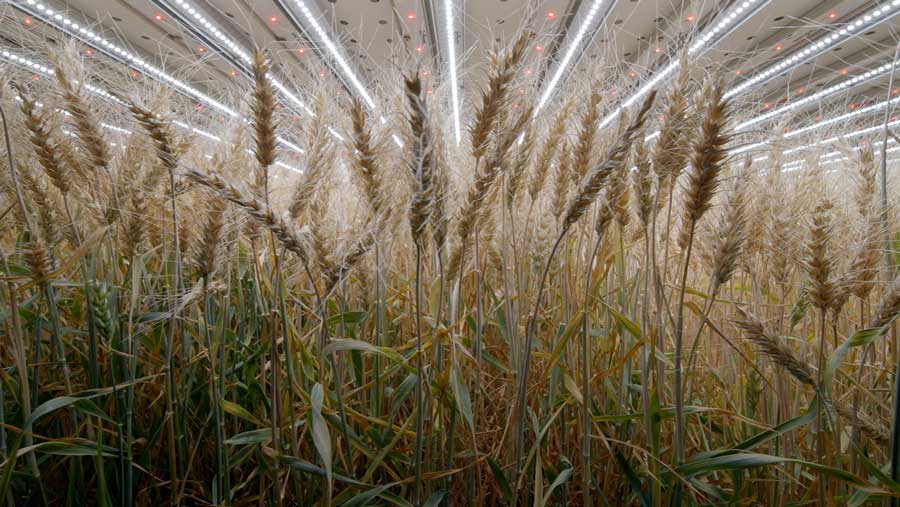Vertical farm projects 117t/ha yields for indoor-grown wheat
 © Infarm
© Infarm Wheat grown indoors using no soil or pesticides and less water can yield 117t/ha/year, vertical farming company Infarm has said.
Following successful first trials, the company said the high-yielding potential of producing the crop in this way was a major breakthrough for climate-resilient farming and ensuring food security.
See also: University designs vertical farms to help self-sufficiency
With average yields for wheat grown in fields significantly lower than the projected figures for the indoor-grown crop, Infarm said the method could help meet food needs for the world’s growing population, which is set to hit eight billion next week.
Guy Galonska, co-founder of Infarm, said: “Our results are significant when compared with the average yield of outdoor wheat production, which is about 4.5 tonnes per hectare per year and heavily dependent on weather and seasons.
“We are confident that wheat can be grown successfully at scale indoors as a climate-resilient alternative. Our record yield could potentially be increased by a further 50% in the coming years using a combination of improved genetics, hardware, and optimised growth environments.”
Proof of concept
Pádraic Flood, crop genetics team lead at Infarm, said the trial was a proof of concept that would hopefully lead to commercialisation.
“Energy sources and costs are of course critical, and Infarm has always been committed to green energy sources and acknowledges the challenges of energy costs in current times,” Mr Flood told Farmers Weekly.
The wheat trial, using an early flowering dwarf variety, was carried out at Infarm’s research and development centre in Berlin.
Infarm’s fresh produce – including herbs, salads and mushrooms – is available in more than 1,850 stores worldwide.
The company’s modular farming systems are capable of growing more than 500,000 plants annually on just 40sq m of floor space.
In addition to using 95% less land, Infarm requires 95% less water than traditional farming methods and uses no chemical pesticides.
Cost concerns
Despite their ability to control growing environments and achieve great control over the quality and consistency, questions have been raised about the future of vertical farms due to rising energy costs.
“Vertical farms are notoriously power-hungry and require large amounts of energy to operate,” says a report from market research analyst IDTechEx.
“These energy costs often form one of, if not the largest part, of their operational expenditure.
“Even before rising energy prices, many vertical farms have already found it challenging to achieve profitability due to the high costs of operation. With dramatic increases in the cost of energy, this could be the final nail in the coffin for many vertical farms.”
The report recommends that vertical farms decouple themselves from gas energy and focus on renewable sources, such as solar or biomass.

